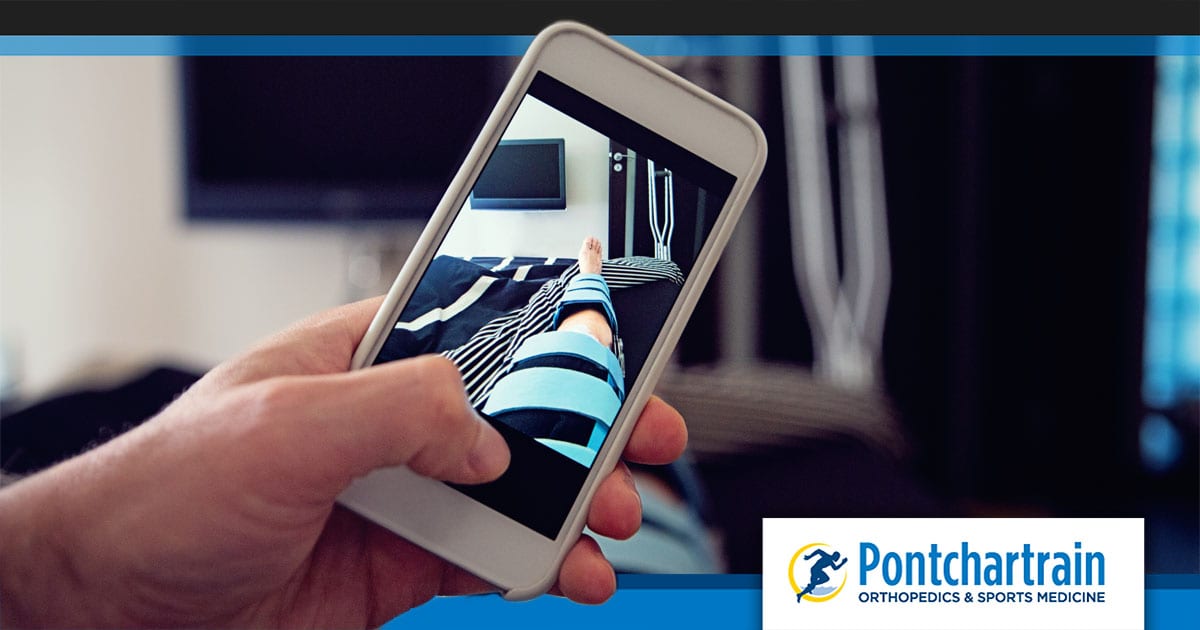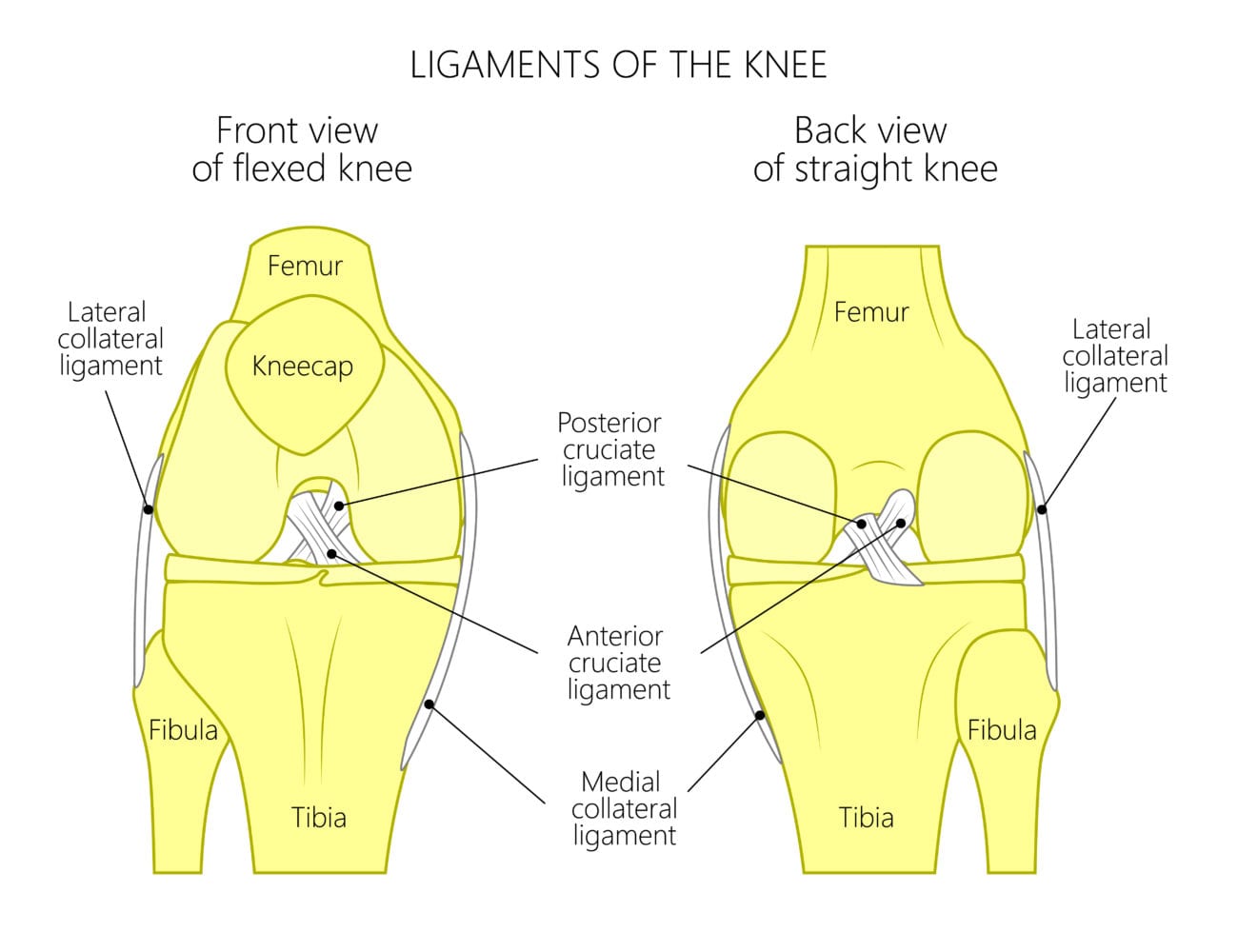ACL tears or injury

No matter how conditioned or strong an athlete may be, their knees are always an area of concern. Because the knee joint takes on so much pressure and bears significant torque, it’s often prone to injury— specifically ACL tears or injuries.
In today’s post, Dr. Joseph L. Finstein, MD discusses the symptoms and treatment options for this painful injury.
The ligaments of the knee
While we primarily focus on ACL tears, it is important to understand the overall structure of the knee. There are four bands of tissue called ligaments inside the knee.
These ligaments connect the thigh bone (femur) to the shinbone (tibia) and protect the integrity of the knee.

"Four ligaments connect the thigh bone (femur) to the shinbone (tibia) and protect the integrity of the knee."
What causes acl tears?
“The ACL is critical in maintaining the stability of the knee,” explains Dr. Finstein. “It is particularly susceptible to sprain or rupture, specifically in high-intensity sports that involve cutting, planting and changing direction.”
Anyone can injure their ACL. However, certain factors, conditions, and specific athletic moves can increase the risk.
Pivots, cuts and awkward landings
The most common ACL tears are caused by sudden stops, pivots or awkward one-leg landings. Typically an ACL ruptures when a patient rotates their hips at the wrong moment, multiplying the forces on the ligament. As a result, ACL injuries are especially high for athletes participating in basketball, soccer, football, volleyball, tennis, and downhill skiing.
Your Gender
According to an article in Sports-health.com, female athletes are at 4 to 6 times higher risk for ACL tears than males. Because women typically have a wider pelvis, their thigh bones angle downward more sharply than in men. This angle applies more pressure to the inside (medial aspect) of the knee, placing the ACL at risk of rupture. ACL Injury: Causes and Risk Factors
Your age
Because of their more active lifestyle and higher participation in sports, those between the ages of 15 and 45 are most likely to experience an ACL injury.
Diagnosing ACL Tears
Ask anyone who has ruptured their ACL and they’ll tell you, “you know something is wrong.” The only way to determine the severity of a knee injury is by having an evaluation by an orthopedic specialist. However, there are some telltale signs that point to possible ACL tears.
Popping Noise in the Knee
The first indication that you may have injured your ACL is a popping noise at the moment of the injury. However, a tear in the cartilage of the knee may also cause a popping sound.
Knee swelling and extreme pain
ACL tears are typically accompanied by knee swelling, tenderness along the joint line, loss of motion and extreme pain when full weight is applied.
Knee failure and instability
Dr. Finstein explains that “while the pain and swelling will usually go away within a few weeks, the instability will remain. Instability is a sure sign your knee needs professional attention.” When attempting to walk on a torn ACL, the knee will likely give out and you’ll feel pain from the inside of the knee.
Despite these indications, the only way to truly know if you’ve torn your ACL is to have a trained orthopedic specialist perform a full evaluation to determine the stability of the knee.
ACL Treatment Options
Following the exam, if an ACL injury is suspected, an MRI will be ordered to examine the bone and tissues deep inside the knee.
RICE for ACL tears - Rest, Ice, Compression, and Elevation
The first course of treatment for most sports injuries generally starts with the least invasive, which is rest, ice, compression, and elevation.
Physical therapy
You will also be encouraged to have physical therapy. Physical therapy for an ACL tear will generally take several months for a full recovery. Physical therapy
Surgery for ACL Tears
If the ACL injury does not heal following rest and rehabilitation, and the knee remains unstable, it may require surgery. Surgery for anterior cruciate ligament (ACL) injuries involves reconstructing or repairing the ACL.
Arthroscopic surgery for ACL tears
“Most ACLs that are torn require reconstruction,” according to Dr. Finstein. “To repair an ACL, the ligament must be reconstructed with a graft. The hamstring or patella tendon are the most commonly used grafts.”
Platelet-rich plasma (PRP) therapy
Platelet Rich Plasma Therapy is one of many regenerative therapies that stimulate tissue growth. In a study published by the National Institutes of Health, researchers studying the reconstruction of ACL tears with and without the addition of PRP therapy found “promising evidence that the addition of PRP could be a synergic factor in acquiring maturity more quickly than grafts with no PRP.” Platelet-rich plasma use in anterior cruciate ligament surgery
ACL recovery starts with a proper diagnosis
Sports medicine has made major advances in the treatment of ACL injuries and tears. The orthopedic specialists at Pontchartrain Orthopedics and Sports Medicine provide the latest in regenerative therapies, surgical techniques, and recovery programs. However, the road to a full ACL recovery starts with a proper diagnosis. Contact us today for a consultation by an orthopedic specialist during regular office hours and at our Saturday Orthopedic Walk-in Clinic.
About Dr. Finstein

Dr. Joseph L. Finstein, MD
Dr. Joseph L. Finstein, MD specializes in sports medicine including injuries of the shoulder, elbow, hip, knee, foot and ankle. He regularly performs cutting edge technology procedures including arthroscopic surgery and robotic surgery.
Dr. Finstein completed his Sports Medicine Fellowship at the Rothman Institute at Thomas Jefferson University where he performed research that was presented nationally. He also served as an Orthopedic Fellow for athletes from the Philadelphia Eagles, Flyers, Phillies, and Soul. He is currently the team physician for De La Salle High School in New Orleans.
This website is not designed to and does not provide medical advice, medical diagnosis, professional opinion, treatment or services to you or any other person. Through this website and links to other websites, Pontchartrain Orthopedics & Sports Medicine provides general information for educational purposes only. The information provided in this website, or through links to other sites, is not a substitute for medical care. You should not use this information in place of a visit, call, consultation or the advice of your healthcare provider. Pontchartrain Orthopedics & Sports Medicine is not liable or responsible for any advice, course of treatment, diagnosis or any other information, services or product you obtain through this site.
